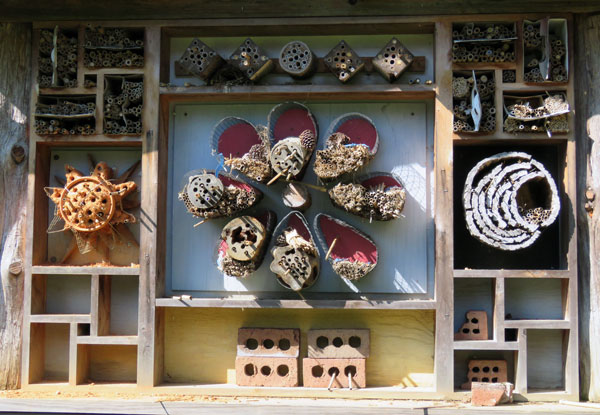
As we were driving out of our neighborhood we saw a fawn nibbling the grass on the side of the road. We pulled up near it and took some pictures. He/she was curious about us. When we decided to move on I suddenly spotted its mother hiding in the vegetation. She had no doubt been watching us the whole time.

It was a tolerable day for a walk. The air wasn’t cool or refreshing like it would be in the fall, but it wasn’t unbearably hot. Dare I say lukewarm and muggy? But Tim decided he would like to give a walk a try. We needed to stop and rest frequently to accommodate his shortness of breath. It is what it is. I was just happy to be outside with my best friend. And the Riverwalk has benches.

Last time we were here was July 7, just after Tropical Storm Chantal had dumped 10 inches of rain and had caused the Eno River to crest at over 25 feet, breaking previous records. It’s hard to imagine that everywhere we walked now had been under water. Some parts of the walk are still closed for repairs.


caught in the trees

(Old NC 86)
It’s hard to imagine that the water flooded this bridge, too, and left so much debris underneath it that it’s hard to see the water now from the riverbanks.






Occaneechi Village is a historic replica of a village located on the Eno River as it was in 1701. … In the early 1700s, the Occaneechi Band of the Saponi Nation lived in a bountiful land with little European presence. The village was an important trade location where the Occaneechi people would trade with the Europeans as well as nearby tribes such as the Tuscarora.
~ The Alliance for Historic Hillsborough website



This part of Riverwalk was closed until August 8 and the village itself is still closed while they keep working to repair the flood damage. In the next picture part of the village can be seen on the right, and the trees on the left are on the edge of the riverbank. Hard to imagine the water coming all the way up to the village!



Now, you might be wondering about this plucky katydid. Yes, it’s the same one pictured in the last post. She first appeared Thursday on the top of our car in the parking lot at Trader Joe’s in Chapel Hill. Tim took that picture with his cell phone. Much to our surprise, she was still on our car after we arrived home in Carrboro. We were even more surprised on Friday, when, after our walk, I noticed her sitting on the passenger side mirror of the car. (above picture) How did she manage to stay on the car from Carrboro to Hillsborough??? We nudged her but she stayed put. Well, when we got back to Carrboro, a 13-mile drive, she was clinging sideways to the car’s back door. So we decided to insist that she relocate and used a stiff tag to dislodge her and transport her to our back deck. (below picture) She didn’t stay there long, however. She waited until we stopped watching her so we missed her departure. I still wonder how she managed to hang on to the hot car for all those miles, over two days.















































































